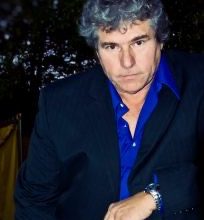The Evolution of Abstract and Impressionist Art in the 21st Century

In recent years, abstract and impressionist art has continued to grow and change, with artists using new ideas and techniques to express deep emotions, spirituality, and the mysteries of life. Abstract art often focuses on shapes and colors that don’t represent anything specific, while impressionist art captures moments and feelings through light, color, and texture. Both styles encourage viewers to experience the artwork in a personal way, letting them find their own meaning in what they see.
These forms of art have become more popular in galleries and museums, with many collectors and fans drawn to pieces that explore human emotions, spirituality, and nature. Today, artists are using their works to connect people with their inner selves and to express the unseen forces that shape our world. This movement is not just about art—it’s about understanding life in new ways.
Osvaldo Calixto Amador is one of the artists who has made a strong impact in the world of abstract and impressionist art. Born in Cuba and now living in the United States, Amador began his painting career in 2006, showing his work in galleries in Miami and New York City. His art is known for its spiritual themes and the way it uses natural elements like water and fire to create texture and emotion. Amador’s interest in the unconscious mind, as well as his Catholic background, plays a big role in his work. Religious symbols, especially the cross, appear often in his paintings, showing his connection to both his faith and his inner journey.
Amador’s first big solo exhibition, Resurrection, took place in 2010 with the support of Miami Dade College. The exhibit received positive reviews, with one art magazine describing it as “one of the best productions in years.” Two years later, his second major show, Credo, was held at La Merced / Corpus Christi Catholic Church in Miami. This exhibit marked a key moment in Amador’s career, as it dove deeper into spiritual ideas, showing the way his art continues to evolve and explore new themes.
Much of Amador’s work is inspired by Carl Jung’s ideas about the unconscious mind. Jung believed that there are hidden parts of ourselves that we don’t always understand, and Amador uses his art to explore these unseen areas. His paintings, filled with abstract shapes and natural elements, help to represent the deeper parts of human thought and emotion. In his work, the balance between light and dark, fire and water, symbolically reflects the human journey toward understanding and enlightenment.
Amador’s use of religious symbols, such as the cross, adds another layer of meaning to his work. These symbols not only connect his art to his Catholic upbringing but also help him explore larger questions about life, spirituality, and the search for meaning.
In addition to his successful career as a painter, Amador made his debut as an author in 2023 with his memoir To Kill a Cockroach. The book explores themes of isolation, belonging, and the struggle to find one’s place in the world. It received praise from Kirkus Reviews, which called Amador “a sympathetic storyteller who digs into these feelings with fearlessness and grace.”
To Kill a Cockroach offers readers a personal glimpse into Amador’s life, his struggles, and his experiences. The title itself, a metaphor for overcoming small but persistent challenges, reflects the book’s deeper themes. Through his writing, Amador continues the exploration of his inner world that he started in his paintings, this time using words instead of colors and shapes.
Osvaldo Calixto Amador lives in Coral Gables, Florida, where he enjoys a peaceful life in a small cottage surrounded by nature. His home, filled with plants, birds, and dogs, is a quiet retreat where he continues to create art and find inspiration. This natural environment, combined with his spiritual beliefs, plays a large role in shaping his work, both as a painter and an author.
Through his art and writing, Amador offers a window into the deeper parts of the human experience. Whether exploring the subconscious through abstract shapes or telling a personal story in his memoir, he invites his audience to reflect on their own journey and the unseen forces that shape their lives.




